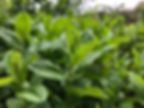Spearmint - Mentha spicata
- The Foraging Course Company
- Jul 13, 2024
- 2 min read
Updated: Feb 14

Edible plant - novice Season - spring/summer Common names spearmint, wild spearmint, our lady's mint, spire mint, Morrocan mint, granny mint, garden mint, lamb mint, common mint, mackerel mint, English mint
Scientific name meaning: in Greek mythology, the nymph Minthe tried to seduce Hades, but Hades' Queen Persephone turned Minthe into a sweet-smelling plant. Minthe's name is the origin of Mentha. Spicata is from the Latin Spica, meaning a point, spike, dart or tuft and a reference to the shape of this plant's flower head
Habitat  Spearmint can be found in hedgerows and ditches, and on roadsides and waste ground. |
Overall structure  A tall, leggy plant reaching 30 - 90cm. Plants form clumps and spread via runners resulting in dense coverage. |
Leaves  The leaves are lance-shape with serrated edges and no stalks. They appear in opposing pairs rotated alternately at 90 degrees along the length of the square stem. When crushed they smell strongly of mint. They can sometimes be slightly hairy. |
Stems and runners  The square stem can be hairless or sparsely hairy. There is often purple colouring along the stem. |
Flower  The lilac-coloured flowers appear in spike-like inflorescences at the top of the plants. The male reproductive parts project out of the flowers. They smells strongly of spearmint. |
Seeds  The seeds are tiny and dark brown/black |
Possible lookalikes  Could be easily mistaken with many members of the mint (dead-nettle) family, which superficially look very similar, such as the lemon balm (Melissa officinalis). Many of these relatives are also considered edible, however, some are not pleasant. The smell of mint would be the determining factor. |
Use as a food the leaves and flowers can be used raw or prepared into condiments and preserves Hazards Although there are no specific incidents associated with this species, excessive consumption of mint oil, for example in distilled form, has been link to miscarriage, kidney failure and diarrhoea
Use in herbal medicine and medicine Has been used to ease stomach cramps and intestinal gas; as an antiseptic, diuretic, poultice and stimulant, and to prevent vomiting. If you are suffering from any ailment or need medical advice, please see your General Practitioner Other uses Garden and strewing herb - it repels mice, rats and insects Importance to other species Provides a valuable nectar source for pollinators
Always stay safe when foraging. You need to be 100% sure of your identification, 100% sure that your foraged item is edible, and 100% sure that you are not allergic to it (it is good practice to always try a small amount of any new food you are consuming). If in doubt, leave it out!





